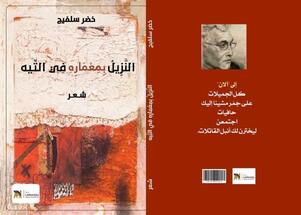-
A Chimera ? The Reclamation of Turkey's 1920 National Pact Borders
-
A Historical Background on Turkey's Long- Term Territorial Claim to North Syria and Former Mosul Vilayet and its Potential Future Prospects

Mistakenly prevailing though, a general perception is that ground invasions of Turkish armed forces beyond Turkey's porous- and until recently unmarked- southern borders in Syria (Rojava) and Iraq (Kurdistan Region) are merely for expansionist ends. Debatably, believing this thesis a true one, the other side of the story has an otherwise version to tell.
On October 18, 2016, Turkish President Recep Tayyip Erdogan, marking the commencement of the new academic year, said:
“Should we fully comprehend the National Pact, we can realize what responsibility we have in Syria and Iraq. On the contrary, if we don’t know the National Pact, we cannot understand what responsibility we have in Iraq or Syria.
“We will be both at the table and in the field. We are currently holding all the diplomatic negotiations on one hand, and making our preparations for the field, on the other.”
Astoundingly, Erdogan words were the echoes of Mustafa Kemal Pasha’s who- some 97 years ago- had said “It is the nation's iron fist that writes the Nation's Oath which is the main principle of our independence to the annals of history.”
……………………………………………………………………………………..……………
Introduction
A 100+ 4 years ago, the Ottoman Empire, with its Pre- First World War status, no longer existed and though begrudgingly accepting the idea of losing vast regions in the Middle East and elsewhere, the Ottomans remained attached to a long salient beneath their southern borders.
The dissolution of the vast Ottoman Empire in the aftermath of the First World War led to the emergence of new nation states that never existed before. Syria and Iraq which were created through the Mandate System of the League of Nations under French and British authorities respectively is a case in study.
Being successor states to the decrepit Ottoman Empire in the aftermath of the World War I- and eventually neighbors on Turkey’s southern borders- Turkish officials have always considered Syria and Iraq as a Turkish backyard fabricated by a deceitful West.
While on the surface the inhabitants of these newly invented states were given the opportunity to express their demands and wishes. However, the disposition to Iraq- which was then under a League of Nations British Mandate- of the former vilayet of Mosul in 1926 and the annexation by Turkey of the former Ottoman Qaza of Alexandretta in 1939- prior to the termination of the French mandate over Syria- show meticulously how shallow and murky slogans of freedom and self- determination embraced by the League of Nations essentially were. Actually, wishes of peoples were not taken into account when it came to deciding a political future or any territorial concession or annexation.
Politically, those peoples felt how they were misled by the false pledges made by those global powers while territorially it came to be known- though belatedly however- how a nation was divided by artificial and undelineated boundaries were drawn by a stroke of pen by men not experienced in the regions affairs.
The story dates back- in setting- to the last lap of the World War I whose last engagement- on the Eastern Front- was curtailed in north Aleppo in northern Syria and south Mosul in northern Iraq which, a year later, is going to make the driving force of the War of Liberation.
A Ticking Clock
On 29 October 1914, under the command of the German admiral Wilhelm Souchon, cruisers “Goeben” and “Breslau”- who had been officially incorporated into the sultan’s navy by a bogus sale and given therefore Turkish names retaining however their German leadership- launched a surprise attack on the Russian Black Sea ports of Sevastopol and Odessa.
Turkey’s participation in the Great War was long demanded by Berlin based on the secret German- Ottoman Alliance of August 2, 1914, whose details as a matter of fact go beyond the scope of this paper.
In summer and autumn of 1918 the Quadruple Alliance- Germany, Austria/Hungary, Turkey and Bulgaria- was set to unravel.
On 15 September 1918, a large force commanded by French General Louis Franchet d’Espèrey broke through Dobro Pole and rapidly advanced to Sofia, the Bulgarian capital. On September 24 Bulgaria was forced to seek an armistice.
On September 29, the Salonika Agreement which suspended hostilities was signed. Bulgaria's defection from the alliance isolated Turkey from its two European allies. The French victory on the Western- Macedonian- front was so complete that the Turkish Grand Vizier informed the British naval Commander- in- Chief in the Mediterranean, Vice-Admiral Gough- Calthorpe, that the Sultan was prepared to conclude a separate peace.
The Ottoman Empire was forced to seek an armistice immediately. There were no illusions about the seriousness of the situation created by the collapse of Bulgaria, which in the judgment of Mohamed Talaat Pasha, Ottoman Minister of the Interior, doomed Turkey to defeat. It had severed the land route to Austria and Germany. The way to Constantinople across the Maritza River was made open for the Allies to catch the Ottoman capital within days.
In the Eastern- Palestine- front, and following the surprise and decisive Battle of Megiddo (September 19- 25) under the command of Field Marshal General Edmund Allenby that pierced the Turkish- German defensive line running from Jaffa to River Jordan, that proved formidable for years, a mass unruly and disorderly troop retreat was ensued. Ismail Anwar Pasha Minister of War and Ahmed Jamal Pasha Minister of Marine disagreed but Talaat prevailed and on October 1 informed Sultan Mohamed Wahid Addine that he and his Cabinet intended to resign.
In Germany, on October 2, Major Freiherr von dem Busche in a meeting of the assembled Reichstag party leader said the military were resolved to proposed to His Majesty that they bring the fighting to a close, in order to avoid further sacrifices on the part of the German people and their allies. Three days later, Germany dispatched the First Peace Note to the U.S. President Woodrow Wilson.
On October 7, 1918, as a goodwill gesture in order to contact the Allies (Great Britain, France and Associated Powers), the whole Ottoman government resigned. On October 11Ahmed Tawfiq Pasha, who was assigned to form a government, asked for his forgiveness. On the following day, Sultan Mohamed Wahid Addine named Field- Marshal Ahmed Izzet Pasha as Grand Vizier and Minister of War and assigned him with the task to form a new government.
Izzet is described as a 63- years old bluff German- trained officer of Albanian origin who was an outspoken opponent of the Ottoman war policy led by the three Pashas; Anwar, Talaat and Jamal.
On October 5 and 14 Mohamed Wahid Addine and Rahmi Arslan Bey, the pro- Allies member of Committee of Union and Progress (CUP) and vali of Aydin, sought the help of Spanish and French governments to mediate a ceasefire with the British. However, the Ottomans received no reply.
October 14, two French torpedo boats and a guard ship entered the Gulf of Alexandretta and bombarded the harbor batteries of Alexandretta. Here, one of the vessels hoisted a while flag and landed some officers. They conferred with the local Turkish commandant and returned to their ships which then left the Gulf. These yielded no results owing to German objection.
Lieutenant- Colonel Stewart Newcombe a British Prisoner of War who had escaped captivity learned that there were Ottoman politicians who were in search of an immediate armistice. Newcombe, from his hiding place, in Pera, took a hand in matters. The attempt by the Porte to send Newcombe to Greece- the nearest Allied army headquarters- to try to bring the war to an end failed to the ground, there was no plane that could take him there.
At this stage, the Ottomans decided to take matters into their own hands by contacting the British Army General Charles Townshend the famous British officer who had given up to the Turkish Commander Khalil Bey in the well- known siege at Iraq’s Kut al- Amara on April 26, 1916.
It was Izzet that contacted and hold matters with Townshend at the Galata Bridge on October 3- before forming the government- to treat for peace with the British on behalf of the Turkish Government, and afterwards in the Sublime Porte office on October 17 two days after Townshend had sent consent to his friend Huseyin Rauf Bey to assist the Turkish Government to negotiate with the British in return for the honorable way in which he had been treated during his long captivity on Ottoman soil.
Direct negotiations started on board the Royal Navy ship Agamemnon decked in the harbor of Mudros on the Island of Lemnos on October 26. However, the Armistice was signed late in the night of October 30, 1918, bringing hostilities between the Ottoman Empire and the Allied Forces to an end three years to a day since the Ottomans were dragged into the war.
The Ottoman delegation to the negotiation talks consisted of Lieutenant Colonel Ali Sadullah Bey (Chief of Staff of the 8 th Army), Rashad Hikmat Bey, (Secretary General at the Foreign Affairs Ministry), and Rauf Bey (Minister for Marine Affairs and head of the delegation) while the British were represented via Admiral of the Fleet Sir Somerset Gough- Calthorpe who had carte blanche from Prime Minister Lloyd George.
Although the Ottoman hopes to have peace on the Fourteen Points declared by the U.S. President Wilson bore no fruits, Townshend and Rauf Bey successfully had the assigned mission done. Rauf had strict instructions from the Grand Vizier not to return without peace.
However, that was not the end of the war for the Ottomans as they hoped, or as the armistice actually sounded; although weapons fell silent, the British still had further goals to attain by diplomacy; a coercive one however. Much of the strategic lands in north and west Aleppo and north Mosul (Vilayet) still wanted by the British who to the Ottoman army officers objection cunningly made articles of the armistice unresolved ones.
In the military terms of the word the armistice did bring hostilities to an end, however, territorially, it represent(s) unsound Turkish losses after the war had ended.
While the nebulous Article Five of the Mudros Armistice "The immediate demobilization of the army except troops required for the surveillance of the frontier and maintenance of internal order, their number and disposal to be determined later by the Allies, after consultation with the Turkish Government," limited the final carve up of the Ottoman Empire, however, the notorious Article Seven "The Allies to have the right to occupy any strategic points, in the event of any situation arising which threatens the security of the Allies," gave British forces- or they assumed so- the right to occupy any part of the Ottoman Empire.
Position of Ottoman Forces at Time of Armistice
When Ahmed Izzet Pasha sent out telegraphic instructions on the implementation of the armistice which was going to take effect at 11:00 of October 31, Turkish army commanders on the front- Mustafa Kemal Pasha in north Aleppo and Ali Ihsan Pasha still in Mosul city- pleaded ignorance of its terms. Turkish officers firmly stood to instructions of the Grand Vizier who was submissive to British demands.
In an effort to halt the enemy's westward advance across Mesopotamia, Turkish leaders ordered the demolition of several strategically located bridges on the Baghdad Railway, including the brand new 850 Yards steel and iron Forth Bridge on the Euphrates River near Jarablus- ancient Carchemish- once the chief city of the Hittites. In the first third of November 1918, the British gained large swathes of territories in north Syria and Iraq which could have cost them thousands of personnel had they fought the Ottoman on the fields.
Mosul- Ali Ihsan Pasha
In the Mesopotamian campaign whose last scene was unfolding in Mosul, the Battle of Sharqat, which took place from 23 to 29 October, was the last engagement between the British and the Ottoman empires in Mesopotamia.
Pursued by the British forces of Sir Alexander Cobbe, the Turkish commander Ismail Hakki Bey- learning about the peace negotiations taking place- spared his forces and surrendered on October 30. On that day, British forces were nearly 20 kilometers short of the city of Mosul.
However, late on November 1, the War Office was said to have sent unexpected orders to General William Marshal to advance on Mosul. Marshall instructed the ranking British officer at the front- Brigadier Robert Cassels- to push on Mosul. The same night, the three Pashas boarded a German naval vessel sailed to Odessa making their way overland to Berlin.
Nonetheless, on the morning of November 2, Cassels sent Colonel Gerard Leachman, under a flag of truce, into Mosul where he informed Turkish Commander- In- Chief, Ali Ihsan Pasha that he must withdraw his troops a distance of five miles from the city, leaving only a small number of guards and police to prevent disorder. At midday, Leachman returned with the message that Ali Ihsan would not leave Mosul. These were passed on to Calthorpe at Mudros. The Admiral agreed with the Turkish position.
Calthorpe was of the opinion that nothing he had negotiated with the Turks on behalf of the British government covered the post- armistice seizure of any Ottoman territory not occupied at the time of the armistice- including Mosul. He conveyed this to the Admiralty.
However, to break the stalemate, Marshall flew up from Baghdad to Mosul on November 7 ordering Ali Ihsan to not only vacate the city but also the whole of the vilayet by November 15. While he had his orders to occupy Mosul, it was not actually clear to Marshall what was meant by “Mosul”.
Marshall was thus taking a huge risk in making his own independent interpretations of both the wording of the Mudros Agreement and of his orders. He was using these interpretations in his negotiations with Ali Ihsan who as he had no orders from the Ottoman government to this effect, rejected to comply with the British orders.
The British, on the other hand, declared that they had the right to occupy the points they deem necessary according to Article Seven of the armistice.
Ali Ihsan, realizing that it was not possible to reconcile with the British, reported the situation to the Grand Vizier who ordered that Ottoman forces evacuate Mosul and retreat as far as the British would show. By the evening of November 7, Mosul and its environs, including the potentially rich oil bearing lands, were in British hands. On 8 November the city of Mosul itself was occupied and Union Jack was hoisted over the Sarai. On the following day, Ali Ihsan left the city on high dudgeon. He withdrew his army to Nusaybin.
Victorious in Mosul, Colonel Gerard Leachman was appointed military governor of the city. Leachman was assigned the task to advance north on the right bank of Tigris in order to secure as much territory from the Ottomans. On the banks of River Tigris, in the Leachman- Ihsan pursuit northward, the British officer stalled his forces at the Safan Valley that was taken as the de facto frontier between British (then Iraqi) and Ottoman (then French) troops.
American historian and professor Harry N. Howard argues England was determined that the Turks would evacuate the entire region. Marshall persuaded the government to limit the advance to the Tigris Front only due to lack of transport. Taking Safan as a natural border Ali Ihsan fortified his troops in the area. After moving his headquarters to Nusaybin, Ali Ihsan delayed the demobilization of his army. He only consented to the demobilization of the local Iraqi troops. He was reported to have recruited and armed militias at Cizire in February 1919 in an effort to prevent British occupation of the area. Later, Ali Ihsan was reproached by Mustafa Kemal for being so submissive to the British for evacuating the city of Mosul.
From east Nusaybin up to River Tigris, where Ihsan was active in mobilizing Ottoman forces, the Ottomans held the strategic villages of Tal Cihan, Deirun Agh (a Qishla)- the historically strategic road junction as an important stage between Nusaybin, Mosul, Zakho and Sinjar on the ancient Silk Road-, Mustafawiye, Kharab Kark, Mamshour, Seigirka and Kharab Rashk. The latter lies to the north where Little Khabur flows into Tigris.
Aleppo- Mustafa Kemal Pasha
Back in north Aleppo, within the final scenes of the deadly theatre of the World War I on the Syrian front, and in the night of October 26, 1918, Mustafa Kemal Pasha evacuated his residual forces from the city of Aleppo which was stormed by Bedouin Arab fighters of Sharif Nasser hours earlier in the day.
Retreating further north, led by Mustafa Kemal the Ottomans inflicted a crushing defeat on the advancing British forces in the vicinity of the village of Haritan- in north Aleppo- the site which was immortalized by a memorial erected in memory of those fell in the engagement or those died of wounds incurred in. On October 28, the Allies took Muslimiye, the junction of the Baghdad railroad and the Syrian railroad, a few miles north of Aleppo without fighting.
In northern Aleppo, Mustafa Kemal, who was leading the battle himself, had a force large enough to defeat any new British attack. Kemal said he was going to "drew a border with Turkish bayonets." However, the line of border which the Ottoman Turks had demarcated by bloody bayonets in the war was going to be lost to the British coercive diplomacy.
When the British and the Ottoman diplomats decided to bury the hatchet, the Turks held a position at least 25 miles in length bestriding the sharply bending road to Alexandretta at two points 12 miles north- northwest of Haritan, with outposts 4 miles in advance. Westward, that line roughly corresponded- with some variances- to the flow of Afrin River up to Saman Dagh (Sweidiye), River Orontes, Reyhanli and Antioch were lying to the south of the line where Turkish forces maintained a strong position. Lake Amiq- ancient Ufrenus- was lying to the north of that line however.
In his memoirs Five Years In Turkey, Field Marshal Otto Limon von Sanders, the Commander of the combined elite German- Ottoman "Yildirim Force," which fought in Syria, discourses on the situation on the front in north Aleppo when weapons fell silent at noon October 31, 1918:
"When the news came of the Armistice the front extended from the slopes of the heights rising there, from Marata to Bablit and Halebli [Haloubiye], thence crossing railroad and the road, from Tannib to Tatmarash and 'Ain Daqni, thence across the Aleppo- Killis road to the southeast of Jibrin. Security detachments were deployed from Deir Jamal to the village of Ziyaret, exactly twenty- five kilometers from northwest of Aleppo."
On November 5, Mustafa Kemal asked Izzet Pasha for clarification of the obscure clauses applying to his sector; Cilicia. In his reply the following day, Izzet stated that the British Admiral Calthorpe in Istanbul wanted Alexandretta and its environs to be surrendered without resistance.
Upon rejecting to comply with orders sent from Grand Vizier, Mustafa Kemal Pasha- reproached for insubordination- was summoned to Istanbul being stripped of his military ranks. Major General Nihad Pasha Commander of the Second Army replaced Mustafa Kemal. Thus, the obstacle in front of the British was removed. Izzet himself was fired on November 8 serving just 26 days in office.
On November 12, a conference was held Between Nihad Pasha and Brigadier- General Goland Clarke in Raco at which Clarke demanded Ottoman officer to withdraw west of the Ceyhan River by 1 December and north of a line drawn between the village of Islahie- Missis. By December 5, they would withdraw west of the Seyhan River- the ancient Sarus- and withdraw west of Pozanti by December 14.
Last, he told Nihad, that as of 06:00 p.m. that day, the British Army would consider the Aleppo- Qatma- Alexandretta road open to the Allies. In consequence, the Ottomans had no choice but to accept these terms. From east Aleppo the line held by the Ottoman forces extended- unmarked though- east- ward up to east Nusaybin. He positioned his forces close to the Safan Valley near Mount Qara Chokh in the Syrian Jazira which demarcated a de facto border between British and Ottoman forces.
From River Tigris, a line following the course of the Safan Stream westward for about one mile, and thence the ridge of Mount Qara Chokh as far as the Siro Plain in eastern Demir Qapou. The vicinity of Rimeilan Koy (Koy is the Turkish term for village) was the line separating Mosul Vilayet from Mardin. The spot is going to be of a an endless debatable contest between the British and the French in 1920s.
British Forces in North Syria v France's Historical Rights
Due to a political understanding with France, General Allenby divided the administration of Occupied Enemy Territory into two parts, western Cilicia- composed of the Ottoman vilayet of Adana- under French administration and the area of Cilicia to the east of the Adana vilayet under the control of the British forces.
Cilicia is enclosed between Mount Taurus and the Mediterranean on the north and south. It is divided into two parts, Cilicia Trachea (the mountainous and rugged,) and Cilicia Campestris, (the plain), of which Tarsus was the capital. In Allenby's era of responsibility, the key strategic points were the two railroad tunnels complexes at Pozanti and Amanus.
Administration of the region was assigned to Lieutenant- General Henry Chauvel the Commander of the Australian Imperial Forces of the Desert Mounted Corps until Spring 1919 when the administration of the conquered territory was then taken over by the newly- created Northforce, commanded by Major General Barrow, former Commander of Yeomanry Division of the Indian Army that founded garrisons for places up the coast as far as Smyrna, and also took over the administration of the Baghdad Railway from Constantinople to the railhead east of Nusaybin.
On November 8, 1918 the British landed troops to Alexandretta and Antioch. As of the following day up to March 24, 1919, the British occupied Alexandretta, Gaziantep, Killis, Marash, Birecek and Urfa but not Nusaybin and Cizire. From the part, the French as of December 7 up to December 19, 1918, occupied Antioch, Dortyol, Tarsus, Ceyhan, Adana, Bahce, Islahiye, Hassa, Mamure and Osmaniye, Mersin and Missis on the right bank of Geyhan- ancient Pyramus.
On February 6, 1919, France proposed to the British Government a new treaty in respect to Syria based on her historical rights in the country that date back to the Crusades up to the landing of French troops in Lebanon in 1860. By a Marine Agreement in 1912 the Mediterranean was designated to be patrolled by the French fleet.
In a conference held in Paris on March 20, 1919, Lloyd George told French Prime Minster Stephen Pichon that his government had definitely decided to have nothing to do with Syria. In the two meetings held on August 19-20, 1919, the decision was made by the British Government to hand over these areas to the French troops. Allenby attended the deliberations held on September 9. London had already instructed Allenby to hand over Lebanon and Syria to the French by November 1, 1919 all in accordance with the Franco- British “Syrian Agreement” dated September 15, 1919.
The British move then was to withdraw from the north of Syria is a two- fold one; strategic and tactical. Strategically, the retreat from the north of Syria was in exchange for Mosul which according to the 1916 Sykes- Picot Agreement was to be a French sphere of influence. Tactically, the whole of northern Syria was within the territorial definition of the much wanted former Ottoman dominions. The Syrian Agreement came just four days after the Sivas Congress on September 4-11, that enunciated Anatolia was not to be permitted sliced up as a pie between the Allies.
Thus, the administration of northern Syria was handed over to the French, and the British forces were replaced by those of "The Army of the Levant" led by General Henri Gouraud, one of France's most famous colonial soldiers who was later to serve as French High Commissioner for Syria between 1920 and 1923. The last of the British soldiers marched out of the country they had conquered and held for nearly a year and a month.
Turkey's National Pact
Although the Armistice of Mudros stipulated that signatories were supposed to retain their current positions, the British advanced further north in Aleppo and Mosul. The terms of the Armistice practically left it open to the British to take possession of such places as they wished; and in consequence north Aleppo, Mosul, Zakho, Amadia, Arbil, Sulaimaniye, Rania, Koya Tal 'Afar and Sinjar were all occupied afterwards.
On November 12, 1918, a French "Inter-Allied" force occupied the Ottoman capital Istanbul. Rawanduz was occupied on April 22, 1923 a day prior to the commencement of the second phase of the Lausanne Conference.
The Turks claim these areas were usurped and although not included within the modern Turkish border yet they remain a Turkish territory. However, the Turks were not going to remain silent. The grievances they felt are going to spark the national struggle for independence.
Under the leadership and charisma of Mustafa Kemal Pasha, nationalist Turks made the reclamation of the border line set in Mudros-- enshrined afterwards in the “National Pact” better known as the “Misak- i Milli”-- the driving force in the war of liberation at the end of the year.
Subject to different interpretations, the small pact laid down the principles and aims of the national resistance movement led by Mustafa Kemal. Members and sympathizers of the movement won parliamentary elections held in October 1919.
In January 1920 they won most of the seats. The reclamation appeal was made by the “Last Term” of the “First Ottoman Parliament” in the session held on January 28, 1920, laying inviolable and inalienable claim to former regions of the Ottoman Empire- mostly Kurdish- which were not occupied when the armistice was signed. Mustafa Kemal Pasha and his government were bound by the Turkish “National Pact”, which envisaged a fully- fledged independent and sovereign Turkey.
While the pact conceded the right of self- determination, via free vote, for the Arab districts south of the armistice line, it embodied in unmistakable terms to contemplate the separation of Mosul- Aleppo line from the Ottoman dominions.
In his national liberation speech made on December 28, 1919, Mustafa Kemal said: "Our national borders pass through Antioch and span east- ward, containing Mosul, Sulaimaniye and Kirkuk." According to the National Pact: those parts of the Empire in which Turks and Kurds were in a majority formed a whole which should not be divided.
London Allied Conference
The military successes and territorial gains made by the Turks against the invading Greek forces had their impacts felt elsewhere. Politically, the Istanbul Government was invited to the Allied London Conference where the Turkish side was represented by Foreign Minister Bakir Sami Bey to whom Mustafa Kemal made it clear not to make compromises on the National Pact.
The most important side of the agreement Bakir Sami signed with his French counterpart Aristide Briand in London on March 11, 1921, was its articles concerning the border- from Bayaz to Tigris- which was highly changed when compared to Sevres Treaty; and which were not going to be changed in Ankara Agreement and the Lausanne Treaty either. Bayaz which divides the sandy Gulf of Alexandretta into two bays by a small and elevated promontory is has been a trade emporium since antiquity.
On August 16, 1921, Lloyd George said: “Now that English armies are not poised to be sent onto the mountains and districts of Anatolia, to suppress the Turkish riot, England has only one choice; to make the Turkish and Greek armies fight with each other to the last.”
The attainment by Turkish forces of a decisive victory over the Greeks on the banks of River Sakarya- the Sangarios-, lasting day and night for 22 days- 23 August/ 13 September- became a military gangrene pervading the body of France which felt compelled to make painful concessions to the unstoppable Turks. The Misak- i Milli, whose roots emanate from the "debatable" terms of the armistice inflated spirit into the defeated and demoralized Ottomans.
On September 20, 1921, Mustafa Kemal Pasha said “The world should know that the government of the Grand National Assembly of the Turkish people shall not tolerate to be treated as servants. Like all civilized nations, the government definitely insists on the request for the recognition of its entity, freedom and future.”
On October 1, 1922, Ismet Inonu, Commander of the Western Armies, signed the Mudanya Armistice Agreement which established Turkish sovereignty over East Thrace; the region was immediately evacuated by the Greek army.
Turkey was no longer a conquered state rather an aspiring and a spirited one. There had been a change in Turkey, “This change is due to the creation of a national spirit in Turkey, and this in turn has resulted in the recent successes of the Turkish Army, with the result that we can no longer treat the Turks as a conquered nation to whom it is possible to dictate any terms we wish,” British General Staff on October 19, 1922, noted. France sent President of the Senate to Ankara to hold official talks for a new agreement. For the Turks, the primary point at negotiations was going to be the scope of National Pact.
The Angora Agreement 1921
An ambitious Radical Socialist politician, Henri Franklin- Bouillon following intense negotiations with the Turks okayed to the evacuation of the French troops from Cilicia- zone of influence recognized to France by the discredited Treaty of Sevres- in exchange for specific economic concessions, notably in the mines of Arghana- Maden and the cotton lands of Cilicia.
While the Turks militarily and diplomatically regained large swathes of territories enshrined in the National Pact, however, much of the Mosul- Aleppo line remains beyond Turkish borders laid down within. France surrendered a part of the area placed in its keeping as mandated territory by the Supreme Council of the Principal Allied Powers. This territory running from the Gulf of Alexandretta to the left bend of the Tigris opposite Cizire, comprised about 16,000 square kilometers.
The border line laid down by the Treaty of Sevres as the frontier between Turkey and the territory mandated to France was substituted a new one. Mersin, Adana, Osmaniye, Marash, Gaziantep, Killis, Urfa, Nusaybin, and Cizire were all ceded to the Turks. The two last ones never occupied by the Allied Powers however. It was Ali Ihsan who precluded the British from occupying Cizire.
However, Nusaybin was left on the Turkish side of the border owing to a technical default for appearing mistakenly on a British map as locating to north of the Baghdad Railway. When French authorities demanded the return to Syria of this city, which was located south of the railway line, the Turkish authorities, admitting the error, asked for a concession in exchange. The matter, however, was settled in the Angora agreement which ceded the ancient town to Turkey. The city of Mardin had been occupied just for one day (November 21, 1919).
The Baghdad Railway was given a great deal of consideration in the Franklin- Bouillon Agreement. The Turco- Syrian border so "rectified" that the Baghdad Railway from Haidar Pasha terminus at Scutari to Nusaybin was to lie within Turkish territory, whereas formerly the sections from the Cilician Gates to Nusaybin lay within the French mandate for Cilicia and Syria.
The British objected in particular to the handing back to Turkey of the localities of Nusaybin and Cizire- both of great strategic importance in relation to Mosul and Mesopotamia- as well the handing back to Turkey of the track of the Baghdad Railway between Choban Bey and Nusaybin. The stations and sidings of the section between Choban Bey and Nusaybin belonged to Turkey as forming parts of the track of the railway.
Kurdish Uncertainties
On December 17, 1918, Society for the Advancement of Kurdistan (SAK) was officially announced. Mohamed Sharif Pasha, being the most prominent Kurdish activist, was appointed to represent Kurdish demands to the Peace Conference in the Versailles Palace in Paris. SAK had been secretly established in Istanbul on November 6, 1917.
On February 6, 1919, Sharif Pasha made his ever since famous "Memorandum on the Claim of the Kurd People" to the Paris Peace Conference. The following day- February 7- in a diplomatic statement given to the Peace Conference on behalf of Britain, it was stated that it would not be possible to include all Kurdish tribes and settlements in a Kurdish state without violating the integrity of Iran.
Eventually, the Kurds were among nations included in Article 22 of the Covenant of the League of Nations signed in Versailles in June 1919 that “Certain communities formerly belonging to the Ottoman Empire should be provisionally recognized as independent nations subject to the rendering of administrative advice and assistance by a Mandatory until such time as they were able to stand alone.”
At the same time, SAK’s activities seem to have caught the eyes of Mustafa Kemal Pasha. The nationalists made tremendous efforts to induce the Kurds to their side in compliance with the 8- Articled Amasya Joint Circular of June 22, 1919 which put practically the war of liberation in motion.
A large number of Kurds were invited to the Erzurum Congress held between July 23/ August 4, and to the Sivas Conference in September 4-11, 1919 where the Kurds were promised equal rights. In a meeting with prominent SAK figures held in Sivas, it was hinted to the Kurds that the Ottoman government and the Sultan were willing to consider granting Kurds a certain degree of autonomy.
In Mosul, the British faced for the very first time the Kurdish question. Throughout 1919 and for most of 1920, British troops were kept busy on the Northern frontiers of the Vilayet of Mosul. Revolts flared up everywhere. The British- Kurdish ice berg did not melt down. The situation in Zakho and elsewhere remained a tense one. On April 4, 1919, while allegedly on a conciliatory mission, Captain Alfred Pearson, Assistant Political Officer was killed. The Goyan Kurds and Assyrians engaged in clashes that lasted- though sporadically- for long years. Seemingly, while the Kurds were pushed by the Turks and Assyrians were encouraged by the British.
Further east, in May 1919, Sheikh Mahmud Barzanji- who had been appointed Hukumdar of Sulaimaniye since December 1918- suddenly brought in a band of supporters from cross the Iranian frontier, imprisoned the British officers in Sulaimaniye and proclaimed the independence of Kurdistan. The British were not to tolerate this however.
Severely wounded through the liver, Mahmoud was captured at the Bazyan Pass, halfway between Sulaimaniye and Kirkuk, on May 17. Mahmoud was sent to Baghdad, sentenced by a military court to death, reprieved, commuted to ten years' banishment in India. He was released in 1922.
In July 14, 1919 Captain D. Willey, Captain H. Macdonald and Sergeant R. Troup were all killed in Amadia. On November 2, Captain K.R. Scott and J.H. Bill, were killed in an ambush laid down by the Kurds near Bira Kapra village. By the end of 1919, realizing that it was impossible to cope with the Kurdish rebels by the use of regular army troops, Britain resorted to Royal Air Force (RAF). The employment of RAF had the desired effects produced on the ground.
Two days prior to the “Bazyan Affair”- May 15, 1919- the Greek forces had landed in Smyrna (Izmir) the occurrence that is going to prompt the Turkish for the national liberation war. The Kurds- though mistakenly- saw in the Greek invasion of Turkey, the increased Armenian activity and the Treaty of Sevres a historic opportunity of an alliance with Greeks with the British backing, to organize a revolt and to establish a state of their own.
From another perspective, the Sultan status- who had floated the idea of a “Proposed Autonomy of Kurdistan” was on the decline, while the power of the Nationalists- who rejected Sevres- was on the rise. The changing international politics and the intra- Kurdish division and split whether to have full independence or an autonomy shattered the Kurdish hopes.
While a trend led by Sayed Abdul Qader of Nahri was of the opinion of an autonomy, another led by Amin Ali Badir Khan openly supported independence. So being the case, Abdul Qader, being the most notable Kurdish figure in Istanbul at the time, contacted the British in Istanbul three times between December 1918 and May 1919. Sureyya Badir Khan visited British officers in Cairo on behalf of Committee of Kurdish Independence in Egypt in January 1919 to appeal for British assistance for an independent Kurdistan.
Even when Sharif Pasha had the Kurdish Question successfully represented and being internationally recognized, letters were sent by Kurdish tribal leaders disclaiming his representation of the Kurdish people.
In a letter submitted to the U.S. General James Harbord, who was in Eastern Anatolia on behalf of the United States government to investigate the possibility of undertaking an Armenian mandate, Mustafa Kemal Pasha- among others- mentioned a secret agreement signed between the Sublime Porte and British authorities in Istanbul on September 12, 1919, by which the former had undertaken not to oppose the creation of an independent Kurdistan.
Mustafa Kemal told Harbord that Britain provoked the Kurds in order to establish an independent Kurdistan under its protection and that British officers were exploiting Kurdish notables to instigate a fraternal fight between Turks and Kurds.
In October 1921, Khalil Badir Khan and other members of the Kurdish Club arrived in Baghdad to discuss the prospect of an anti- Turk rebellion in Dersim, Diyarbakir, Bitlis and Van with the help the British. The Greeks were ready to support such a plan. However, it was not approved by the British government. In the same month, France decided to end hostilities with Turkey and Nusaybin and Cizire became a part of Turkey. The Badir Khanis had always hoped and sought that Cizire- Botan's old capital- be incorporated into Iraq.
By the end of 1919, Turkish nationalists began to employ effective propaganda discourses-- mostly Islamic-- toward the Kurds. This, together with the pro- Armenian policies of the allies, pushed the Kurds under the influence of Turkish nationalists. Consequently, a number of influential Kurdish tribes fought on the side of the Turks in the Turkish War of Independence.
In the Cairo Conference (March 12- 30 1921) the Kurdish Question was put once for all on the shelf and when mentioned it was merely to keep up appearances. Great Britain was opposed to the idea of backing a Kurdish revolt or interference into Turkish affairs at a time they were eager to preserve Turkey rather being devoured by that "newly hatched reptile- Bolshevism-, which had not raised its ugly head yet."
At the end of the day, the Kurds- and Armenians- found no mandatory power as the United States Senate rejected a request made by President Wilson. The Treaty of Sevres was never ratified and eventually superseded by the Treaty of Lausanne with no recognition of the Kurds except for cultural and educational rights.
The fledgling Armenia was snuffed out and Kurdistan never saw life. Three months after Lausanne the Republic of Turkey was declared with Mustafa Kemal Pasha elected President remaining in office for 25 years.
Realistically speaking, apart from Mohamed Sharif Pasha's letter addressed to the British Government dated November 23, 1914, in which the Kurdish Pasha voiced readiness to bestow Kurdish fighters upon the side of His Majesty's Government in the war conditioned on an assured pledge from the latter for a future Kurdistan, there was no formal contact between the British and the Kurds. Sharif received no favorable reply, if any.
However, nearly four years later- June 3, 1918-, Sharif met Sir Percy Cox, then Britain's High Commissioner for Mesopotamia in Marseilles where again the Kurdish politician asked the British to have a Kurdish protectorate. Obviously, there was no clear reply too.
After the war, and owing Kurdish uncertainties, divisions and rivalries added to Turkish victories attained against the invading Greek forces and the evaporating hopes of an American Mandate over Armenia, rubbed more salt into the wounds. The Great Powers who had the halo of some divine mission and prepared to bring not only peace but an eternal peace made such a horrible muddle of the Near East.
Thus neither the Autonomists nor the Secessionists, had their aspirations met; Ironically, prior to and during the Great War, and when the Ottoman Empire was on the decline the Kurds remained in the Turkish fold, however sarcastically, when the Nationalist Turks rose steadily in the aftermath of the war, the Kurds left that fold. What a paradox that ensued long decades of political rift !....
Read more click download
You May Also Like
Popular Posts
Caricature
BENEFIT Sponsors BuildHer...
- April 23, 2025
BENEFIT, the Kingdom’s innovator and leading company in Fintech and electronic financial transactions service, has sponsored the BuildHer CityHack 2025 Hackathon, a two-day event spearheaded by the College of Engineering and Technology at the Royal University for Women (RUW).
Aimed at secondary school students, the event brought together a distinguished group of academic professionals and technology experts to mentor and inspire young participants.
More than 100 high school students from across the Kingdom of Bahrain took part in the hackathon, which featured an intensive programme of training workshops and hands-on sessions. These activities were tailored to enhance participants’ critical thinking, collaborative problem-solving, and team-building capabilities, while also encouraging the development of practical and sustainable solutions to contemporary challenges using modern technological tools.
BENEFIT’s Chief Executive Mr. Abdulwahed AlJanahi, commented: “Our support for this educational hackathon reflects our long-term strategic vision to nurture the talents of emerging national youth and empower the next generation of accomplished female leaders in technology. By fostering creativity and innovation, we aim to contribute meaningfully to Bahrain’s comprehensive development goals and align with the aspirations outlined in the Kingdom’s Vision 2030—an ambition in which BENEFIT plays a central role.”
Professor Riyadh Yousif Hamzah, President of the Royal University for Women, commented: “This initiative reflects our commitment to advancing women in STEM fields. We're cultivating a generation of creative, solution-driven female leaders who will drive national development. Our partnership with BENEFIT exemplifies the powerful synergy between academia and private sector in supporting educational innovation.”
Hanan Abdulla Hasan, Senior Manager, PR & Communication at BENEFIT, said: “We are honoured to collaborate with RUW in supporting this remarkable technology-focused event. It highlights our commitment to social responsibility, and our ongoing efforts to enhance the digital and innovation capabilities of young Bahraini women and foster their ability to harness technological tools in the service of a smarter, more sustainable future.”
For his part, Dr. Humam ElAgha, Acting Dean of the College of Engineering and Technology at the University, said: “BuildHer CityHack 2025 embodies our hands-on approach to education. By tackling real-world problems through creative thinking and sustainable solutions, we're preparing women to thrive in the knowledge economy – a cornerstone of the University's vision.”
opinion
Report
ads
Newsletter
Subscribe to our mailing list to get the new updates!






















